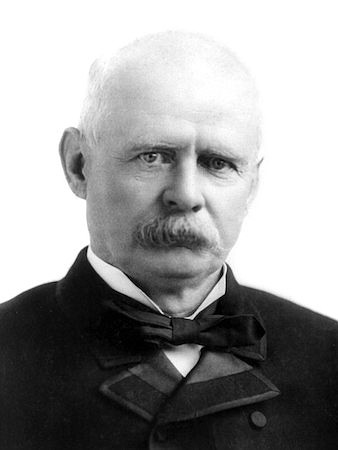(Editor's note: Last in a series)
It was September 1889. The Chattanooga News celebrated the first step taken toward the preservation of the grounds associated with the Battles of Chickamauga and Chattanooga. A gathering of the Army of the Cumberland (Union) and the Army of Tennessee (Confederate) veterans at Crawfish Springs, Ga., united for a grand barbecue and a sharing of memories as they commemorated the 26th anniversary of the battle.
Georgia's governor welcomed the former soldiers, noting their "renewed and eternal bonds of brotherhood," but it was former Union Gen. William Rosecrans who brought them to their feet. "Today ... survivors of [the battle], both Blue and Gray ... are assembled together to consider how they shall make it a national memorial ground." Their shouts subsided when Rosecrans continued, "It took great men to win that battle, but it takes greater men still ... to wipe away all the ill feeling which naturally grows out of such a contest."
The Chattanooga News captured the contrast between the gathering and the first meeting during the hot September of 1863. "There were soldiers of the blue and the gray, the veterans of both sides, the brave men who fought beneath the stars and stripes and those who battled under the stars and bars. There they were, seated together ... all intent upon one great purpose ... all blessing the day that has bound together the North and the South. ..."
Six years later, headlines across the nation celebrated the creation of the first national military park at Chickamauga and Chattanooga, but perhaps the most poignant ones were in the local papers. "Chickamauga-Chattanooga National Military Park closes the Breach Forever Between North and South," announced a special edition of The Chattanooga News, detailing the planned programs and speakers, special guests, "descriptive articles, fully illustrated with engravings and maps," and the unveiling of monuments and markers.
Between 40,000 and 60,000 people arrived for the multi-day celebration with a military parade at the inaugural event. The official reviewing stand must have groaned beneath the combined weight of the reviewing officers, who included U.S. Vice President Adlai Stevenson, a lieutenant-general of the United States Army, five members of the presidential Cabinet, 14 governors, the commissioners of the new park, Tennessee senators and representatives, the mayor of Chattanooga and other elected officials.
The dedication ceremony at the Chickamauga Battlefield opened at noon with the firing of a "national salute of forty-four guns," followed by the vice president, the presiding platform guest. The Rt. Rev. Bishop Gailor of Tennessee offered a prayer, and the gathered crowd sang "America" and "Auld Lang Syne." Each visiting governor brought greetings, and then the crowd dispersed to walk the battlefield. The evening's dinner, hosted by the city of Chattanooga, featured addresses from Gen. O.O. Howard, Gen. Joseph Wheeler, Chattanooga's Gen. Willard Warner, Gen. Frank O. Armstrong, Col. Fred Grant and Father Thomas Sherman.
But, it was the former scenes of conflict -- Chickamauga, Orchard Knob, Lookout Mountain, Missionary Ridge and the lesser known points of engagement -- that claimed the attention of the aging veterans. As the Chattanooga Daily Times reported, the veterans were intent on marking "the positions and movements of all troops on both sides so that the history of these great engagements may be read by all men, though all time ... in bronze, marble and steel."
Several steel observation towers afforded splendid views of the battlefield and the identifying lines of conflict. More than 400 guns had been obtained from arsenals, and 100 had already been positioned, "mounted upon iron gun carriages of the same pattern as were used in the war." The additional guns would be positioned following the ceremonies, aided by the location of tablets and state monuments that had been placed the previous day during "impressive dedicatory exercises coordinated by the Michigan, Ohio, Illinois, Indiana, Massachusetts and Wisconsin delegations and the new lines to be marked during the day's ceremonies."
Union and Confederate veterans walked the fields together, remembering the events of 1863 while moving forward to dedicate the site. They wandered in and out of a huge tent, decorated with flags and an "immense canvas sign, bearing the inscription: 'The government of the people, by the people and for the people, shall not perish from the earth.'"
The United States -- and the local region -- celebrated the park's dedication and the healing of old wounds.
Linda Moss Mines, the Chattanooga and Hamilton County historian, is a National Park Service volunteer and honorary regent, Chief John Ross Chapter, NSDAR. For more local history, visit Chattahistoricalassoc.org.
